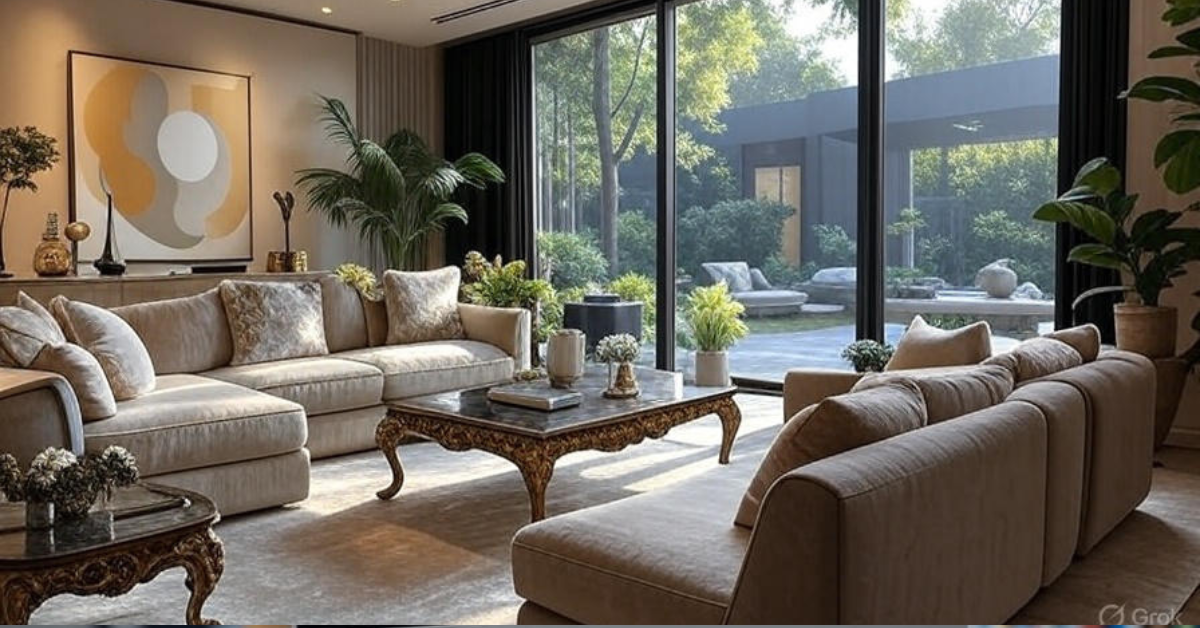Lifestyle
Inside Rich People Houses: 2025 Luxury Trends

Inside Rich People Houses—have you ever scrolled through social media and caught a glimpse of those massive homes that seem straight out of a movie? You know, the kind where everything looks perfect and you can’t help but think, “What’s it like in there?” Well, that’s what we’re chatting about today. These places aren’t just big; they’re packed with smart ideas that make life easier and more fun. Whether you’re curious for fun or looking for ways to spruce up your own spot, let’s walk through what makes these homes tick.
Key Takeaways
- Rich people’s houses often go for quiet, useful luxury instead of showy stuff, with spots for relaxing and green touches that last.
- On average, these homes hover around 3,000 square feet, with room for families and private perks like elevators or extra kitchens.
- Trends like open windows without curtains and cozy textures show off subtle style, but watch out for upkeep costs and eco worries.
- Homes vary by country—think huge spreads in the U.S. versus snug setups in Europe.
- You don’t need a fortune to copy some ideas; small swaps can add that fancy feel to any house.
What Defines a Rich People House?
If you’re at a party in a rich people house, and it’s not just the size that hits you—it’s how everything flows. These homes stand out with their focus on space, custom touches, and smart planning. They’re often bigger than the usual U.S. home, which sits at about 2,384 square feet these days. But for the wealthy, it’s more like 3,281 square feet on average for luxury spots. They mix privacy with spots to hang out, turning a house into a personal retreat.
Size and Layout Essentials
Space is key in a rich people house. Many have layouts that fit multiple generations, with extra rooms for guests or work. Why all those empty rooms? Often, it’s for hosting or boosting resale value. Take Antilia, the massive home in India owned by a billionaire—it’s over 400,000 square feet and stacks luxury with family-friendly vibes.
Subtle vs. Flashy Wealth Signs
Not all rich people houses scream money. Some go for “old money” looks—simple, timeless stuff like soft linens or wood accents. Compare that to newer wealth, where you might see big pools or shiny gadgets. A quick tip: Stick to classic pieces in your own home to keep it feeling fresh longer.
Common Features in Rich People Houses
If you’ve ever peeked inside a rich people house on TV, you know the features can be wild. Here’s a rundown of 10 popular ones that pop up often, blending fun with function. These aren’t just for show; they solve real needs like privacy or downtime.
- Indoor pools for year-round swims.
- Elevators to skip the stairs.
- Home theaters with comfy seats.
- Wine cellars for collectors.
- Golf simulators in the basement.
- Bunkers for safety (yes, really).
- Secondary kitchens to keep messes hidden.
- Smart lights and security that blend in.
- Outdoor kitchens for easy barbecues.
- Custom closets bigger than some bedrooms.
In New York City, about 42% of owner-occupied units are single-family homes, giving folks room for these add-ons. They can bump up a home’s value by 15-20%.
Wellness and Leisure Amenities
Relaxing is big in rich people houses. Think home spas with tubs that switch from hot to cold, or chambers that pump extra oxygen. Imagine coming home tired and soaking away the day—sounds nice, right? To tackle feeling alone in big spaces, many add cozy nooks for chatting.
Tech and Security Integrations
Tech hides in plain sight here. Voice-controlled lights or cameras keep things safe without looking clunky. Unlike regular homes, these setups save energy but can hike bills—wealthy folks might emit way more carbon, sometimes 1,000 times more than lower-income ones. A fix: Go for energy-saving versions if you’re adding similar tech.
Current Trends Shaping Luxury Homes
Trends in rich people houses shift with the times, leaning toward green and calm in 2025. Designers say folks want homes that feel good and do good for the planet.
Eco-Friendly and Subtle Designs
Sustainability is hot. Natural stones and recycled bits cut down on waste. Larger homes mean higher emissions—rich ones can put out far more carbon than smaller spots. Try this: Swap in LED bulbs or plants to green up your place without big changes.
Aesthetic Innovations
Walls with texture, bold colors like deep blues, and “naked windows” (no curtains) are in. These let light flood in and show off the view. TikTok loves this stuff, with trends like luxury sheets racking up millions of views. Bold tones beat plain whites for warmth.
Global Variations in Rich People Houses
Rich people houses change with the location. In the U.S., it’s all about spread-out space, while Europe keeps it compact.
U.S. vs. European Luxury
American ones sprawl, often starting from the 983 square feet average back in the 1950s and growing big. European spots, like in Paris with medians around 495 square feet, pack luxury tight. Case in point: A Beverly Hills pad versus a cozy Paris flat—both fancy, but one emphasizes views, the other efficiency. Borrow this: Add multifunctional furniture for small spaces.
Asian and Emerging Market Styles
In Asia, think tall towers with opulent touches. India’s Antilia mixes height with cultural flair. Horizontal U.S. layouts differ from these vertical ones. Privacy matters, like hidden kitchens for cooking smells.
Challenges of Owning a Rich People House
Owning a rich people house isn’t all glamour. Upkeep and hidden issues can sneak up.
Maintenance and Cost Burdens
Features like rosewood floors might cost $7 per square foot or more, adding up fast for big areas. Picture scrubbing a huge pool—time-consuming. Hire help or pick low-care options to ease this.
Psychological and Social Impacts
Big spaces can feel empty, leading to loneliness. Social media shows perfect homes, sparking envy. Unlike snug houses that bring people close, these need intentional gathering spots. High earners might share interiors more, but it adds pressure.
Real-World Examples and Case Studies
Let’s get real with some stories from rich people houses.
Celebrity Mega-Mansions
Stars often have unusual add-ons, such as tracks for dirt bikes or safe bunkers. One celeb home boasts a golf setup indoors—perfect for rainy days. Scale it down: A mini putting green in your yard.
Everyday Applications
You can mimic quiet luxury cheaply. Swap fancy sheets for soft ones, or DIY wall textures. High-end versus budget: Real wood costs more but lasts longer; laminates save money. Beat access issues with online finds.
Conclusion
Rich people houses may look out of reach, but they reveal a lot about how comfort, technology, and style come together. From wellness spas to smart eco-designs, these homes show the balance between luxury and practicality. The good news? You don’t need millions to borrow ideas. Simple upgrades—like better lighting, cozy textures, or eco-friendly touches—can bring a bit of quiet luxury into any space. In the end, it’s less about size and more about creating a home that feels special, personal, and inviting.
FAQs
- What are common features in rich people houses? Things like indoor pools, elevators, and spas, plus hidden tech for ease and quiet.
- Why do rich people have so many rooms? For parties, family, or a value boost, even if some sit empty.
- What is quiet luxury in home design? Simple, quality stuff like natural fabrics without the bling.
- Do rich houses have sustainability features? More now, with green materials to cut big carbon outputs.
- What are signs of discreet wealth in homes? Open windows, fine linens, and textured walls for subtle status.
- How do global rich houses differ? U.S. big and spread; Europe tight; Asia tall and cultural.
